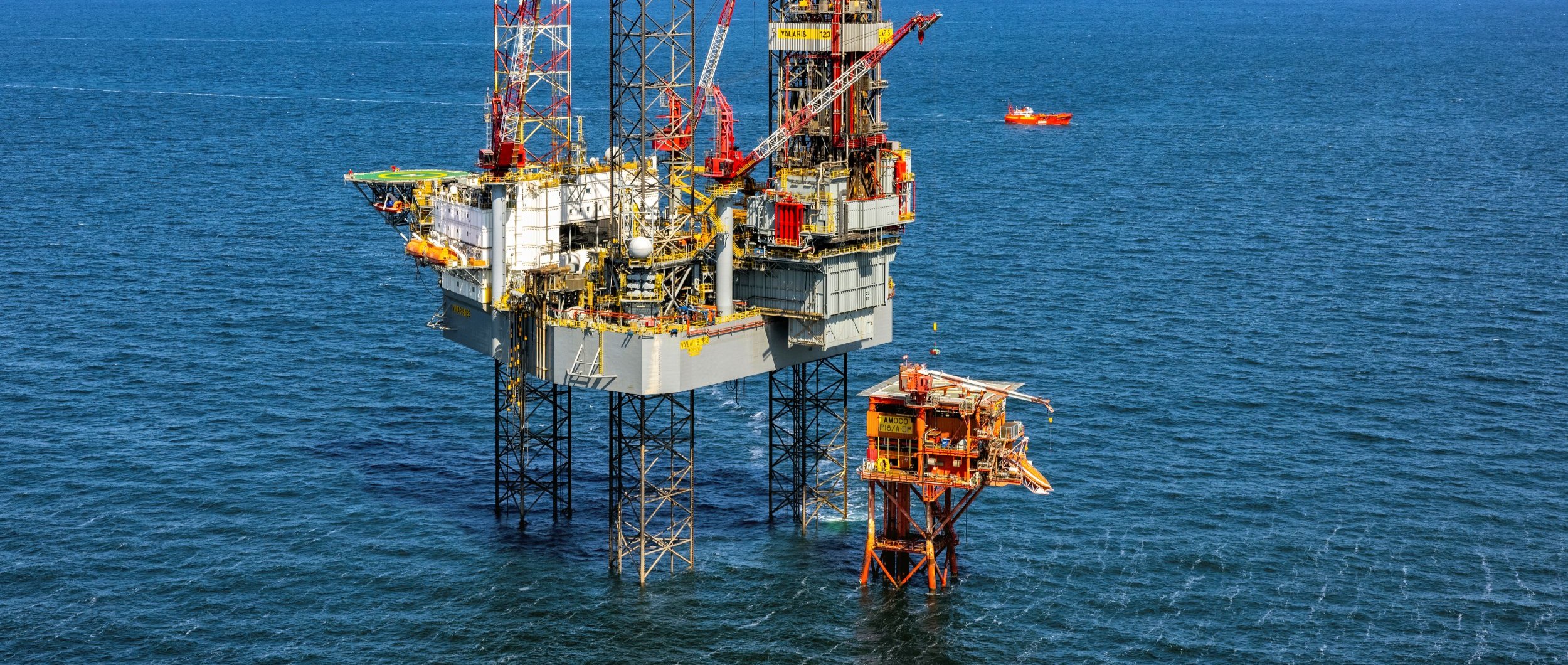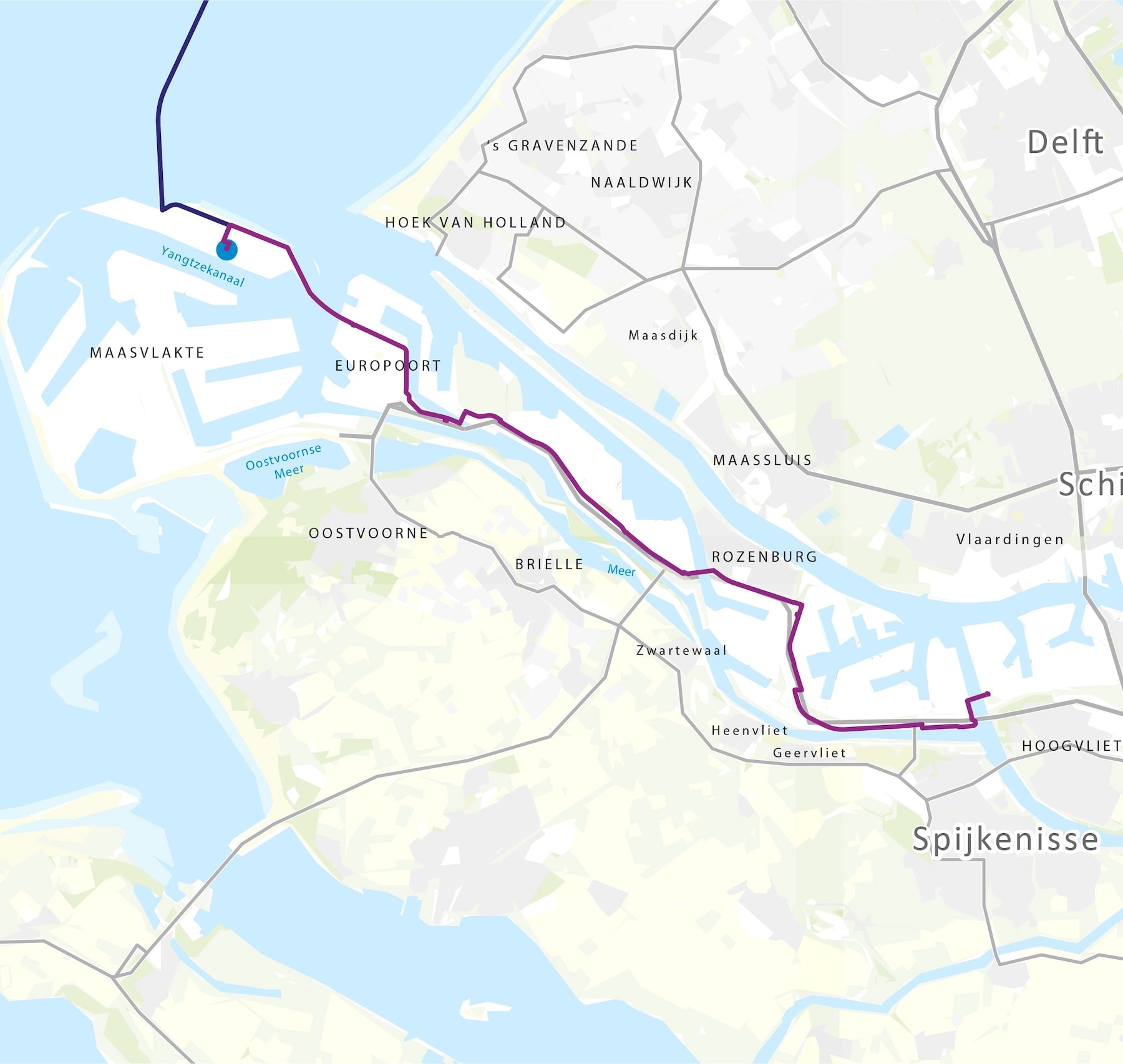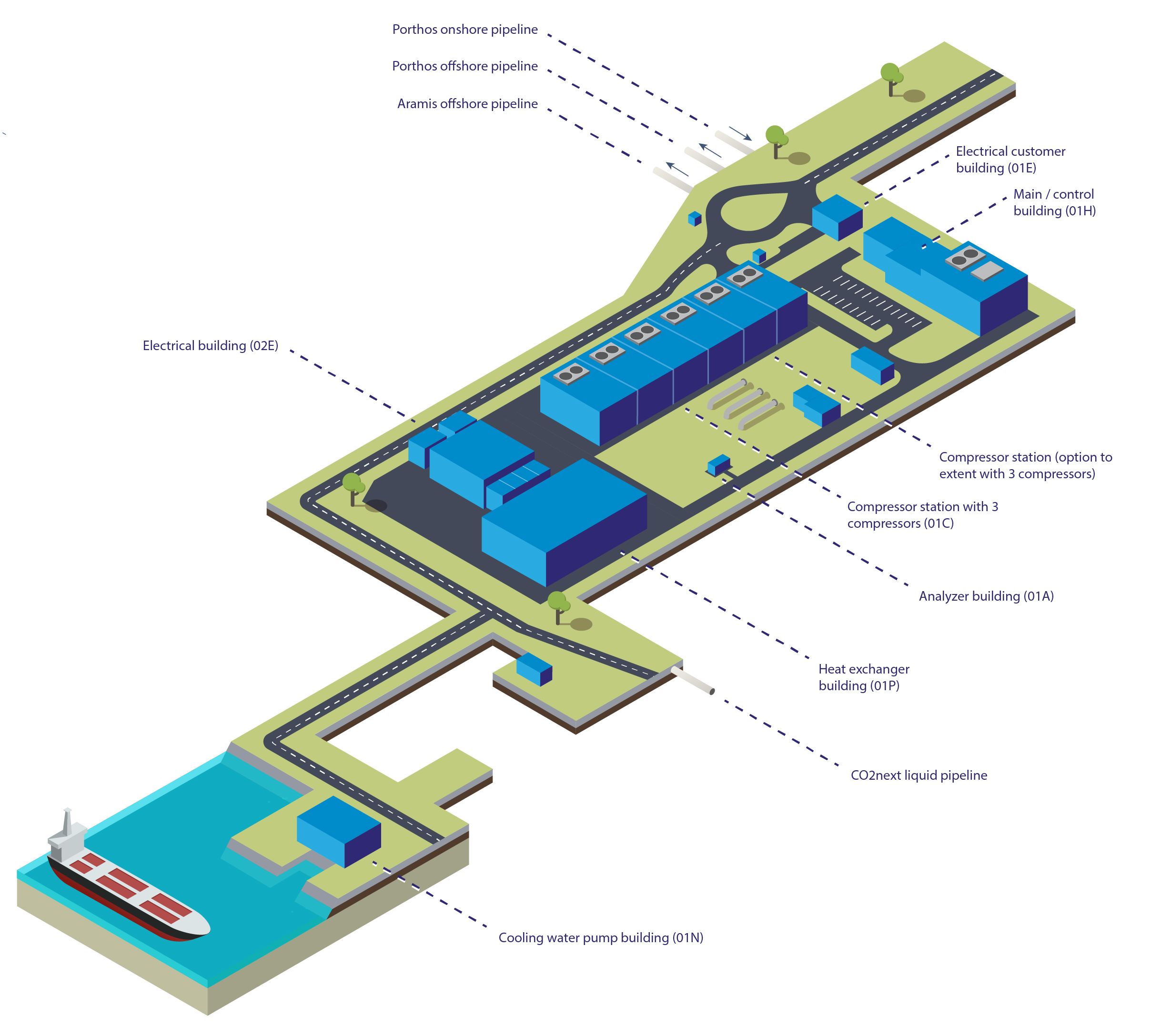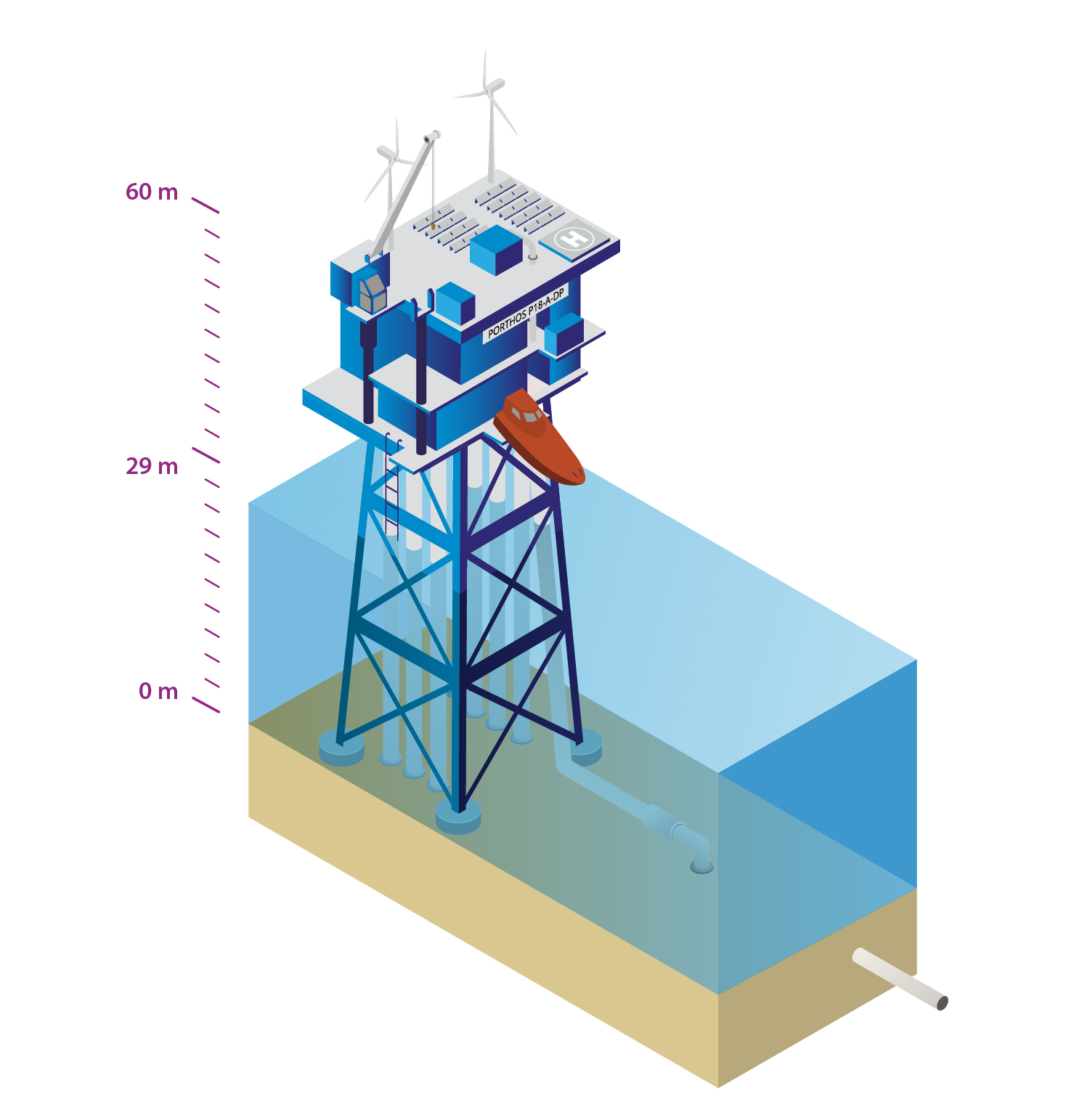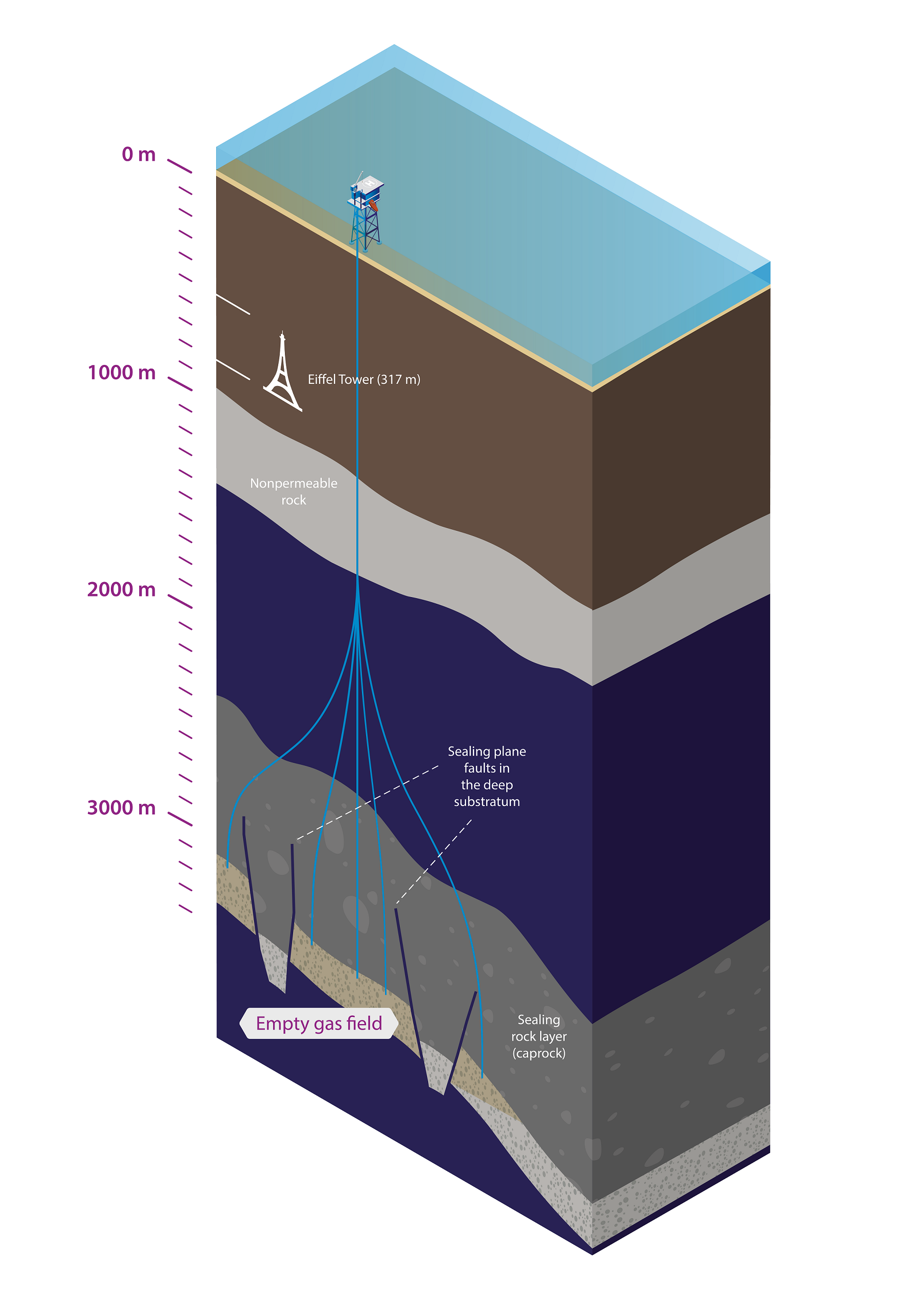Porthos is developing a project in which CO2 from industry in the Port of Rotterdam will be transported and stored in depleted gas fields under the North Sea.
The CO2 transported and stored by Porthos will be captured by several companies. The companies supply their CO2 to a collecting pipeline of over 30 kilometres through the Rotterdam port area. The onshore pipeline route consists of so-called field stretches and is also full of so-called special crossings: pipeline strip crossings, road crossings, horizontal directional drilling (HDD) and open front drilling (GFT). The CO2 is then pressurised at a compressor station, which is needed to transport the CO2 as a gas.
The CO2 goes by subsea pipeline to a platform in the North Sea, about 20 kilometres offshore. The platform located here will be converted for reuse by Porthos, to inject the CO2 into depleted gas fields. These gas fields are located in a sealed reservoir of porous sandy rock, three to four kilometres under the North Sea. Porthos will store about 37 Mtonnes of CO2, which is about 2.5 Mtonnes of CO2 per year for 15 years. When the Porthos project becomes operational, the transport of CO2 will take place in three phases. The project map below visualizes these phases, starting with a free-flow phase enabled by the low initial pressure of the depleted reservoir. The next phase is gas-phase injection using compressors up to 75 barg. Finally, the system switches to dense-phase injection with colder CO2 and pressures rising to 135 barg.
The final investment decision for Porthos was made in October 2023. Construction of the Porthos infrastructure started in early 2024. The system is expected to be operational during 2026.
Porthos has been recognised by the European Union as a Project of Common Interest. Such projects connect EU countries’ energy systems and can benefit from accelerated permitting procedures and funding. For more information, visit Projects of Common Interest (europa.eu).




